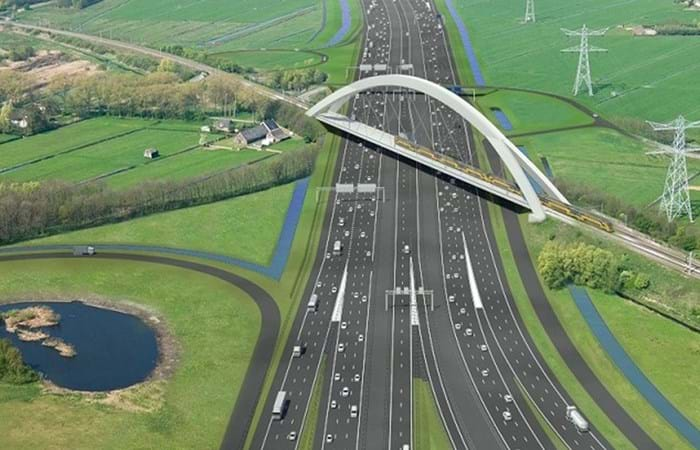The A1/A6 project is one of the five sub-projects for Rijkswaterstaat that are included in the upgrading of the road network linking Schiphol Airport, Amsterdam, and Almere (SAA). The total length of the SAA link is 40 kilometers. Boskalis, together with partners, is responsible for the section from the Diemen intersection to Almere, a distance of approximately 23 kilometers.
The enlargement of the A1/A6 involves the reconstruction and widening of this section of the motorway. The A1 and the A6 between the Diemen intersection and the Hollandse Brug will become a road with 2x5 lanes. The A6 from the Hollandse Brug to the Hoge Ring near Almere will be 4x2 lanes. Reversible lanes will also be built on the entire A1/A6 section. The enlargement of the A1/A6 will also involve the construction of a permanent bypass at the Diemen intersection from the A9 to the A1. SAAone will build a total of 70 new engineering structures, including the cantilever bridge crossing the Amsterdam-Rhine Canal, the doubling of the Hollandse Brug bridge across the Gooimeer and the new aqueduct near Muiden as the most eye-catching features. The aqueduct that takes the River Vecht across fourteen lanes is the widest in Europe. After the completion of the construction stage in mid-2017, SAAone will maintain the work for 25 years.
